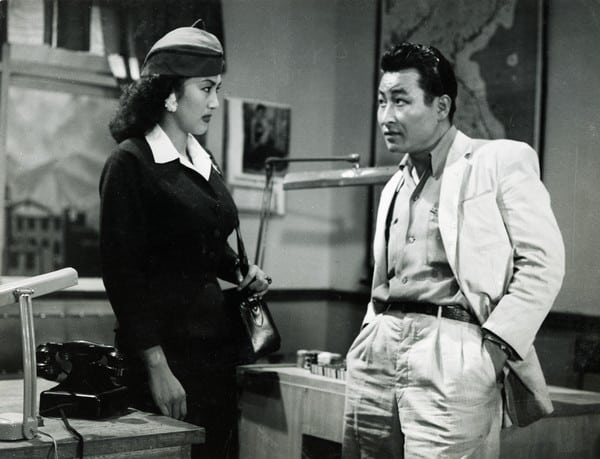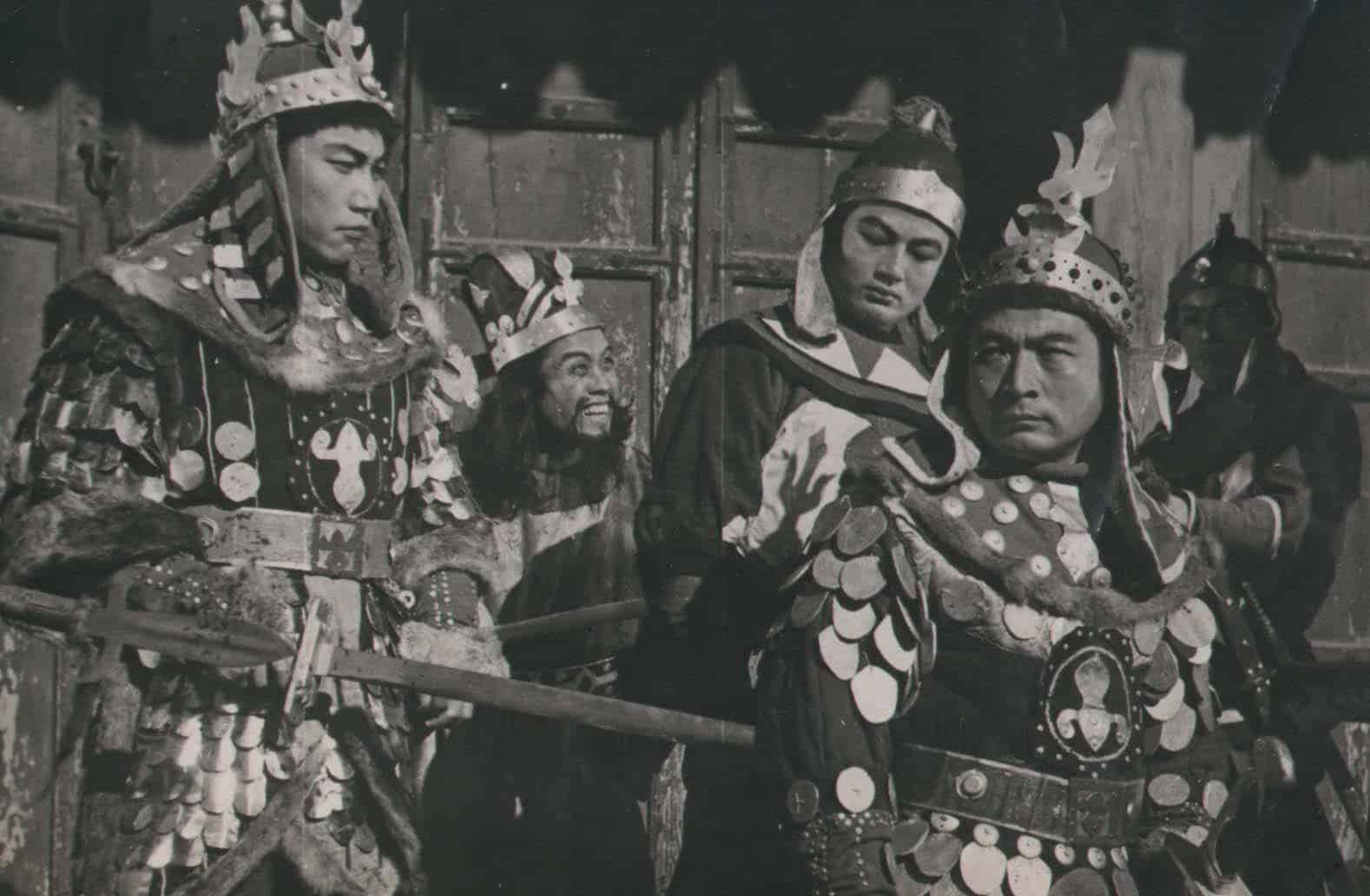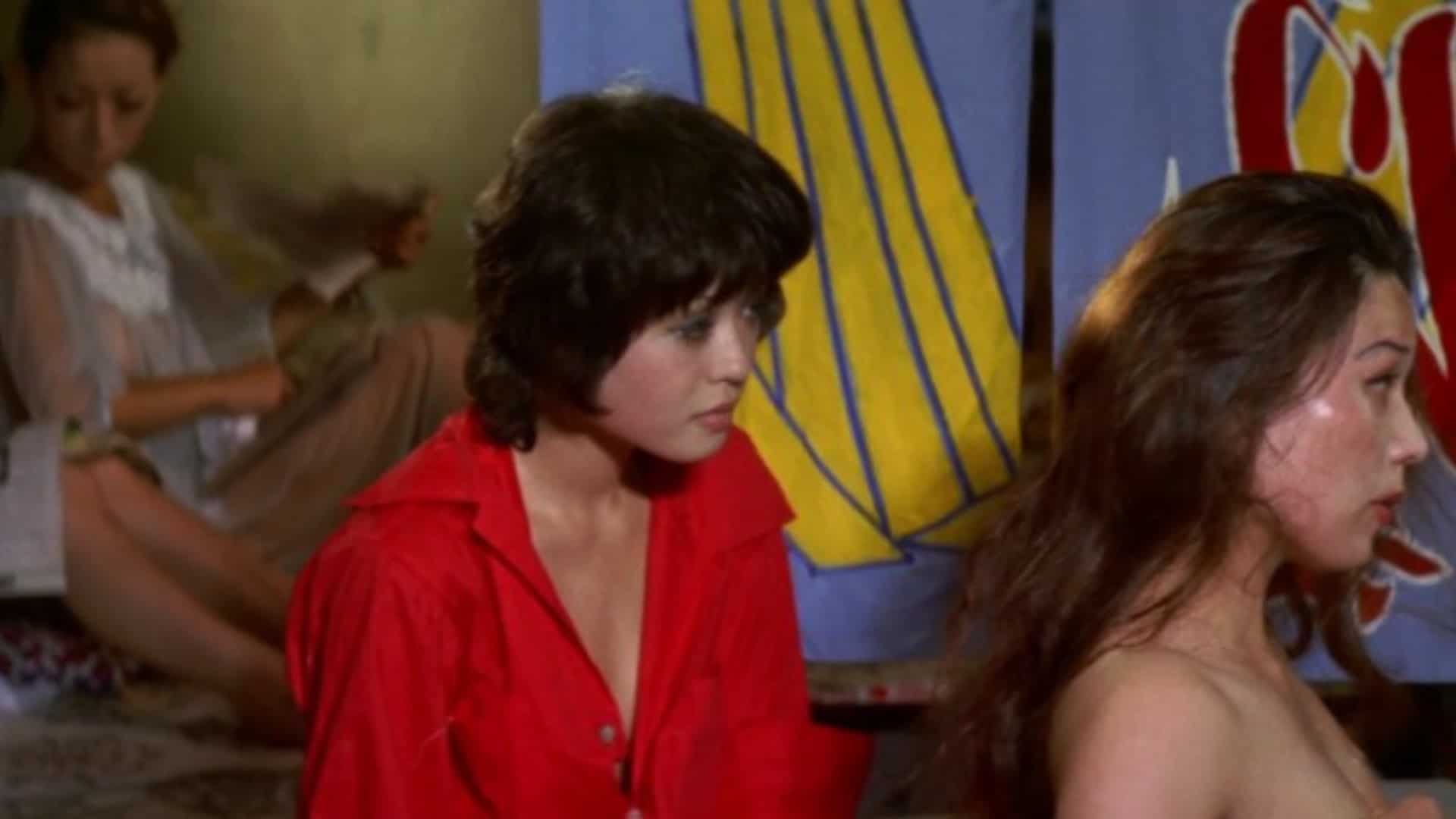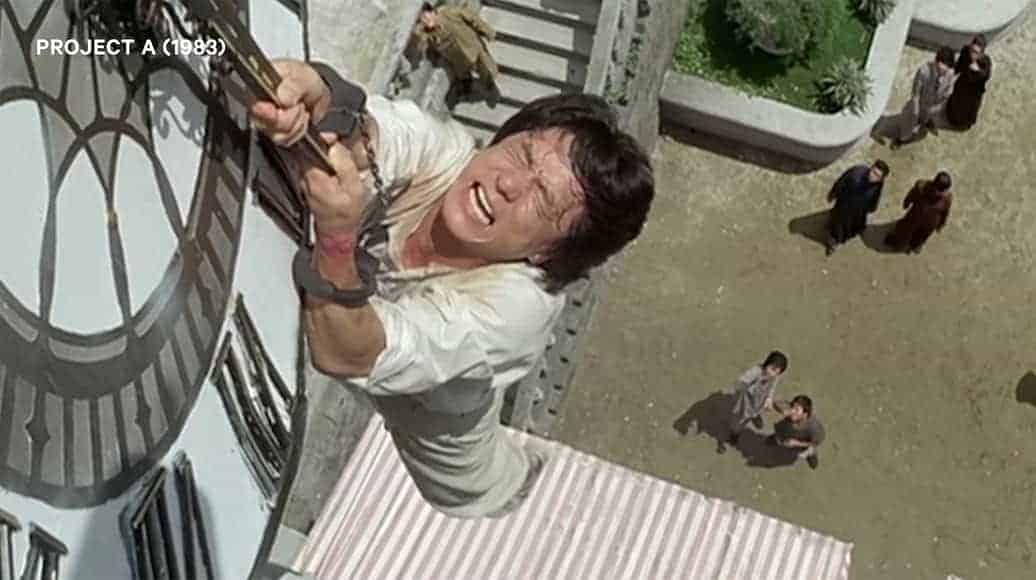12. Yangsan Province (Kim Ki-young, 1955)

The most obvious aspect of the film is that the intensely melodramatic story goes too far with the various occurrences and episodes that take place, to the point that the narrative becomes chaotic if not completely illogical after a while. On the other hand, Kim Ki-young seems to thrive in this chaos, at least in terms of entertainment, with his sense of humor, the subtle eroticism and the various rituals that are presented repeatedly in the film allowing it to be quite entertaining. Particularly the masked dances are very impressive, through a combination of ominousness and hilarity, also adding an element of presenting rural life, which also extends to various rituals, attitudes, and beliefs, as the ones revolving around the moon.
However, the element that truly makes the narrative thrive is the tension created by the premises of the story, with the pressure the couple feel due to Ok-ran's mother, Moo-ryeong and the general circumstances of the era being quite well communicated to the viewer. Furthermore, the fact that this tension is repeatedly defused through a number of fighting scenes, occasionally involving a number of actors, also works quite well for the film, additionally highlighting Kim's directorial and editing abilities. The root of their attitude, which seems to be the obsession with what they want and a total neglect for what the rest want, as exhibited by almost every character in the film, provides a rather eloquent comment about human nature, and the blights of any kind of obsession.
13. The Youth (Shin Sang-ok, 1955)

Shin Sang-ok, in yet another effort that loans heavily from similar Hollywood productions and has the distinct purpose to please the audience, used the original novel by Kim Dong-in to come up with an amalgam including historic (melo)drama, romance, action and thriller, in a rather confusing but also entertaining package.
As the film begins, Min Gyeom-ho, whose father was killed by Daewongun, attempts to assassinate him but fails after the interference of Jae-yong, a supporter of the Prince Regent. Lee In-hwa, who is posing as a young boy in the Academy Prince Regent inhabits, (although a number of people seem to know the fact) is to be married to Gyeom-ho, and proceeds on freeing him. Eventually, the three of them become allies and fight against Min Gyeom-ho and his peers, although their efforts are, evidently, bound to fail.
14. Madame Freedom (Han Hyeong-mo, 1956)

Han Hyeong-mo directs a film whose base is the melodrama, particularly through the fate the women in the story face, but he has also induced it with a number of elements that focus on mainstream entertainment, a tactic that explains, to a point, the popularity of the film. The flirting, the dancing, the crime, and the overall Western elements definitely move towards this direction, in a time when an underground craze about western style dancing was sweeping Seoul. This aspect is what presents the most memorable scene in the movie, of the Korean dancer doing the mambo in the most sensual fashion in the club Seon-yeong visits, with the admiration she draws from both men and women watching her being as palpable as the fact that she enjoys the attention.
On the other hand, the rather pointy, almost didactic comment about women in Korean society is also quite evident. As soon as Seon-yeong leaves the house, she embarks on a trip towards promiscuity, flirting with men and neglecting her husband, her son and her house in general. The comment is so driven, that Han Hyeong-mo even seems to suggest that even her husband's flirting is instigated by her behaviour, although the secretary that becomes the object of his admiration is also “judged” like Seon-yeong. Furthermore, Seon-yeong's friend, who has been indulging in all this “decaying westernization” even before her friend, and even has the audacity to go into a proper business endeavor, finds herself swindled and ends up in with an even worse fate. This punishment by fate the women in the film experience is also the main source of melodrama in the narrative, with the genre's trademark unlikely occurrences being present in all their glory. In that regard, it becomes obvious rather early in the film, that the title is highly ironic.
15. The Wedding Day (Lee Byung-il, 1956)

Lee Byung-il directs a genuine comedy, with the humor deriving from every aspect of the narrative. The despicable nature of the father is the most evident one, with Kim Seung-ho-I portraying Master Maeng as a guile caricature, while the way the majority of the family reacts to the news of Gap-boon marrying upwards also draws much laughter, particularly in the case of the grandfather. The circle (literally) of Gap-boon's girlfriends is another source of comedy, particularly regarding the way their reaction changes when they learn that the groom is a gimp. The reaction of all the characters, actually, is quite hilarious, despite the fact that in today's terms, such behaviour would be considered offensive, even racist. Apart from the main elements, the comedy is also in the details, with Lee including a number of vocabulary jokes and gags, while the scene when one of the servants tries to explain the “switch” of Gap-boon to Ip-boon and the way everyone has to react accordingly, is bound to make the viewer laugh.
On the other hand, being a fable, the movie ends up with a moral about being racist, cunning and money-obsessed, although even this is presented with a certain measure of hilarity.
16. Beat Back (Lee Kang-cheon, 1956)

Based on the Battle of the Noris, the film records the struggle of the remaining soldiers with as much realism as possible, with the war scenes actually taking up the overwhelming majority of the narrative. The bombings, the one-on-one fights, the tanks, and most of all the fights and the life in the trenches are all presented with remarkable realism, not to mention with an audiovisual prowess that makes it very difficult to believe that this is a 1956 film. In that fashion, Gang Yeong-hwa's cinematography is exceptional in the presentation of both the area and the actions of the two armies, with the same applying to Lee Kang-cheon's editing which induces the film with a rather fast pace, and Sim Jae-hun's work in the sound, that finds its apogee in the multiple explosions.
The action continues almost non-stop, with very brief breaks that focus on Lee Kang-no's life with his wife and child, which eventually takes a rather melodramatic turn, and the interactions of the soldiers in the trenches during the moments they do not have to fight. This last part adds a sense of humor in the movie, lightening the mood through the jokes and teasing between comrades, the majority of which revolves, expectedly, around women. This decision by Lee Kang-cheon works quite well for the narrative, adding to the entertainment it offers and allowing the viewer to take a break from all the killing and the melodrama.
17. Holiday in Seoul (Lee Yong-min, 1956)

The plethora of occurrences and characters that are included in Lee Cheong-gi's script can be somewhat justified by the Shakespearean “much ado about nothing” recipe, particularly regarding the relationship of the main couple, or, in another fashion, if the story is perceived as a medium of highlighting the various beauties of Seoul. The second case seems more possible, since cinematographer Jeong In-yeob presents the various sides of the extended city (urban, bucolic, rich and poor houses, parks, the river, cafe and bars etc) as in a photobook, with the events actually revolving around the areas than the other way around.
What the film has going, however, is a sense of hilarity deriving from the unlikely occurrences, which is juxtaposed with some elements of drama and the didactic nature of a fable, which seems to focus on how a wife should trust her husband, No Matter What she hears from various Erinyes. The arc with the pregnant young woman also moves in that direction, as it seems to criticize the blights of premarital sexual relations. This combination carries the movie to, at least, some measure of coherence, although chaos remains the main element of the narrative, with Lee Yong-min's editing adding to this sense even more.
18. Hyperbolae of Youth (Han Hyeong-mo, 1956)

Han Myeong-mo directs a situational comedy, drawing much laughter from both Boo-nam's inability to do, well, anything and Myeong-ho's awe but also looking down on the lives of the rich. This aspect, along with the musical and the romance are responsible for the entertainment the film offers, and actually carry it from beginning to end. In that regard, the movie benefits the most by the acting, with both Hwang Hae as Myeong-ho and Yang Hun as Boo-nam giving excellent performances, which also benefit by their actual appearance. The way the romances progress are quite enjoyable to watch, and also benefit by the performances of Ji Hak-ja as Jeong-ok and Lee Bin-hwa as Mi-ja, whose metastrophe in the way they end up liking their new “guests” is one of the best parts of the narrative.
At the same time, however, Han has managed to include a number of sociopolitical comments in the movie, which elevate it above a simple musical/comedy. The most obvious one presents the differences between the rich and the poor, particularly regarding the way they eat, but also on a number of other aspects as the “obsession” of the latter with anything western, including cigarettes, music, and in essence, way of living. The ignorance Boo-nam shows about how society works is another comment (“why don't you have meat, it just costs as much as too packaged of imported cigarettes”, he asks Jeong-ok) about the way the rich live. Furthermore, the concept of the patriarchy also comes to the fore as things get serious between the two couples, while the fact that Myeong-ho states that his father had been kidnapped and taken to North Korea, his brother was killed in action and that himself was wounded in battle, seems to imply that the poor were the ones who suffered the consequences of the war the most. Lastly, that educators were underpaid is also another comment regarding the way the economy of the time worked. These comments, however, are presented in subtle fashion, and the overall aesthetics of the movie remain flimsical, from beginning to end.
19. The Pure Love (Han Hyeong-mo, 1957)

Han Hyeong-mo directs a film whose mainstream aesthetics permeate every aspect of both narrative and production values. The many and unlikely coincidences and occurrences, the crime and the way the story unfolds after that, the way Christianity is presented in the movie (particularly the repeated “Silent Night” hymns) all point towards a distinctively Hollywood-influenced film. Furthermore, the way the camera focuses on the undeniably beauty of Kim Ui-hyang who plays In-soon wearing either bathing suits or rather tight dresses also moves towards the same direction, as do the many different locations that appear in the film. Lastly, the all-time Korean favorite melodrama is here once more, with the final part of the movie moving distinctly towards this direction.
On the other hand, technically, the movie is on a very high level, highlighting its obvious big budget. The way DP Lee Seong-hwi has captured the many different locations, from the summer setting on the beach, to the many locations in the city, including the prison and particularly the court, is excellent, with his framing being one of the best assets of the production. Han Hyeong-mo's editing is also quite good, with his frequent cuts retaining a rather fast pace that adds to the entertainment of the film. Kim Dong-jin's music, although occasionally too frequent, again in mainstream fashion, suits the general aesthetics to perfection.
20. The Shadowless Pagoda (Shin Sang-ok, 1957)

Shin Sang-ok creates a labyrinthal narrative that includes machinations, treacheries, revenge, unrequited love, some splashes of action and the inevitable melodrama which mostly revolves around the female characters. It is this aspect however, where the most significant comments about the era derive, with the sad fate all women, despite their social position, have to face, with both Guseualagi and Asanyeo's path being a tragic one, just for being in love with a man, and essentially, tools of revenge in feuds between men.
At the same time, and as the tragedy extends to Asadal, Shin Sang-ok highlights the fact that the people that were not born in nobility were essentially slaves, even in the case of such a skillful and renowned artist as Asadal. That his misery comes during the construction of an object of religious significance, inside a temple, could also be perceived as a critique on the ways of organized religion, which, at the time, went hand in hand with aristocracy. The persona of the gatekeeper monk seems to be the embodiment of this comment, in one of the most impressive parts in the movie.
21. The Palace of Ambition (Chung Chang-hwa, 1957)

Chung Chang-hwa directs a film whose title suits it perfectly. The ambitions are running amok in the court and the webs of treacheries, conspiracies, false accusations and murder dominate the setting, in a narrative that is quite intrigued if a bit complicated at times. In that setting, the presentation of most of the protagonists highlights their character quite thoroughly, with the dichotomy between the good and the evil being quite clear. In that regard however, it comes as a surprise that the Crown Prince is set on a background role, with the two candidates, Guseulagi and Hwaseonagi having more central roles, and Kim Mi-seon and Go Hyang-mi giving great performances respectively, and the first even having a rather active role in the many action scenes.
This last arc, especially after Guseulagi escapes, is one of the best parts of the movie, with the plethora of action providing a well-needed relief from the machinations of the palace, while adding to the entertainment the movie offers. At the same time though, a number of them are of lower quality, particularly when compared with the ones of the war films of the era, as in the case of “Beat Back”. Granted, the costumes make the action a bit more difficult to implement, but the way Chung Chang-hwa has used jump cuts to show the deaths looks almost amateurish. On the other hand, the character and the way they conduct themselves is quite good, while the many one-on-ones in the end and the presence of the giant (Lee Soon-geun) compensate significantly.














